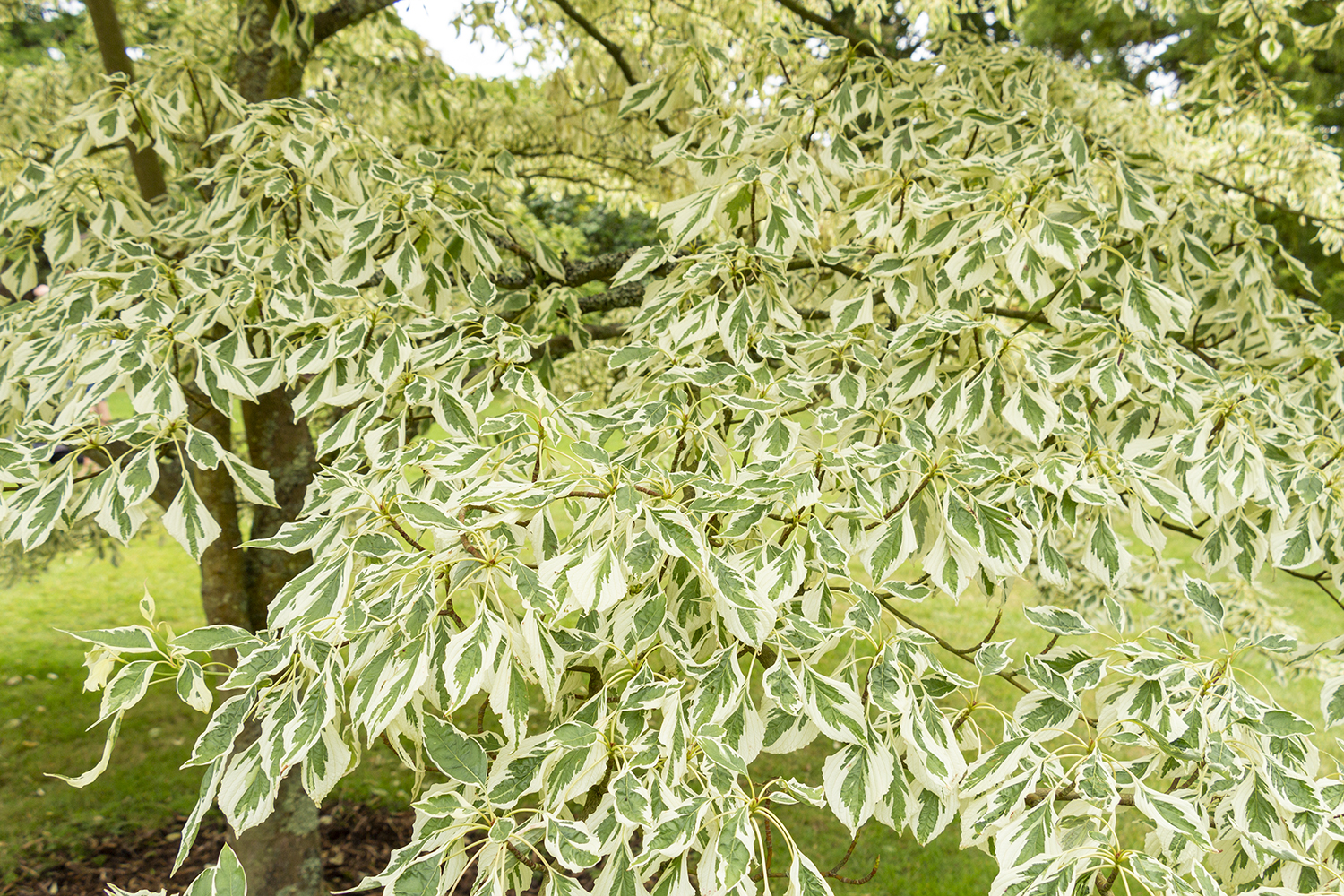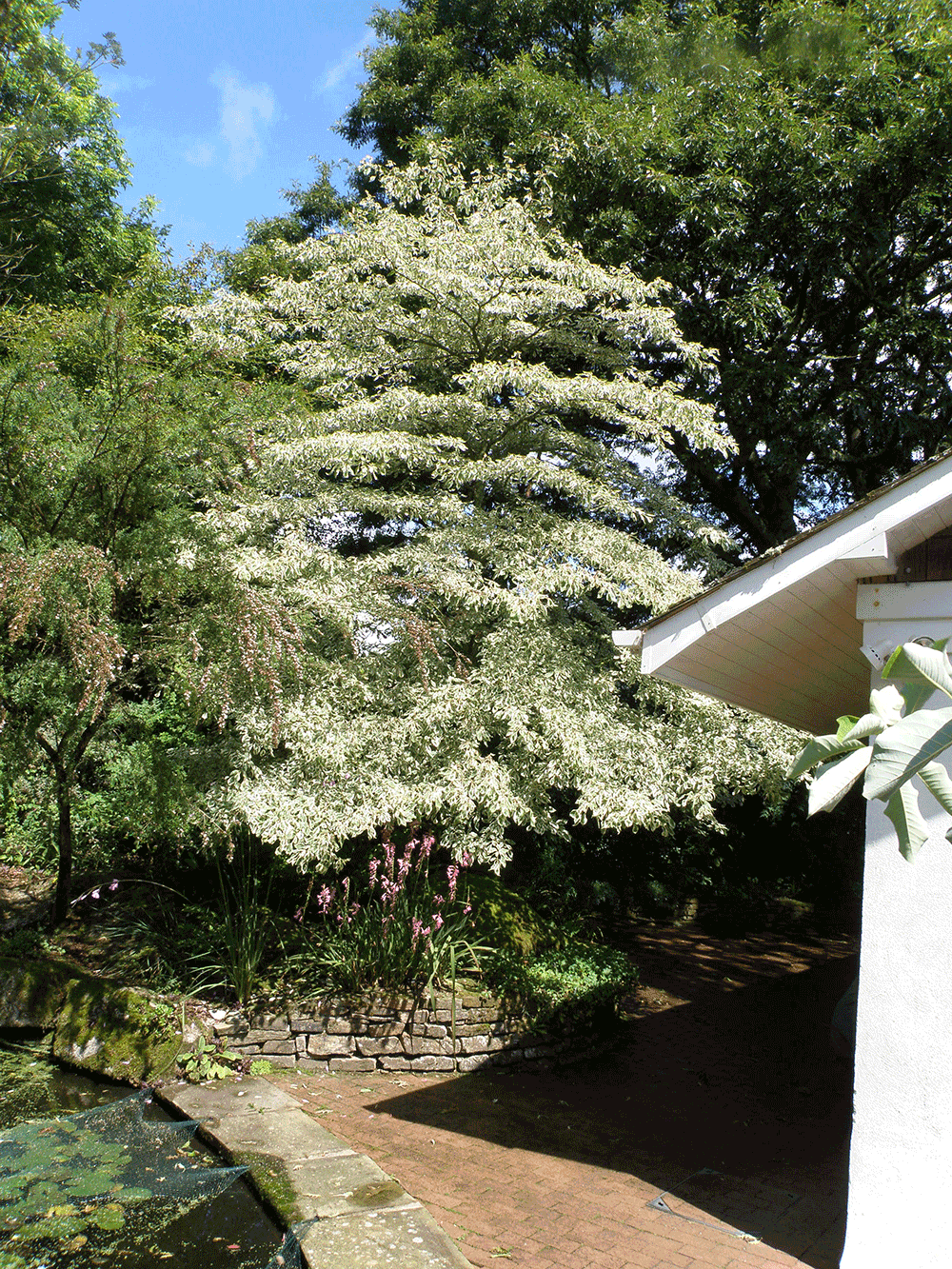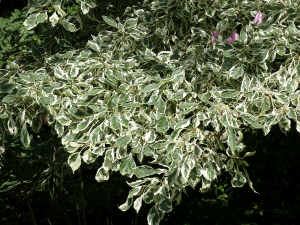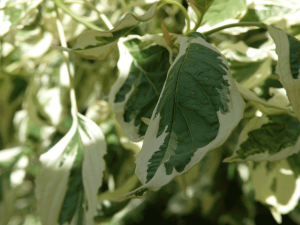Best known in gardens in the form of Cornus controversa ‘Variegata’ this plant has had a convoluted history. The species C. controversa Heml. was first “discovered” in cultivation. In January of 1909 an article was published in Curtis’s Botanical Magazine which discussed the naming of Cornus macrophylla and the authors noted that there appeared to be confusion regarding the name. Though introduced back in 1827 it was not widely grown but it was known to be a tall and bushy plant when observed in the wild and this varied little over it wide natural range. William Botting Hemley who had retired as Keeper of the Herbarium and Library at Kew the year before had studied this and noted that the examples in cultivation were a mixture of two species: one with opposite leaves and the other alternate.
The simple fact was that the naming had got into a mess but when the original specimen that Wallich had named C. macrophylla was checked it had opposite leaves and the original description in Flora indica of 1820 described the leaves as “sub-opposite”. Next Meyer in 1845 had also described the plant in a Saint Petersburg publication but naming it C. brachypoda. All this resulted in America and continental Europe using Meyer’s name of C. brachypoda for the form of the plant with opposite leaves and C. macrophylla for the alternate leafed form while in Britain both forms were known as C. macrophylla. In an attempt to clear things up the German botanist Bernhard Koehne tried to split the species in the belief that the Himalayan form was a distinct species which he called C. corynostylis but got confused between the opposite and alternate leaf arrangements. To clear up this confusion William Hemley proposed that if the plant had its leaves arranged opposite one another on the branches it should be called C. macrophylla Wall. as has been Nathaniel Wallich’s intention and the alternate leafed form should be a separate species Cornus controversa Hemsl. meaning cornus controversial, a most appropriate name. And that is as it has remained; apart from an attempt to place several of the cornus species, this one included, in the genus Swida in the 1960’s.
That would be the end of it with C. controversa Hemsl. providing us with a very garden worthy small tree with tiered branches and masses of cream flowers in May, but towards the end of the 19th century a variegated from was found and shortly before 1890 Veitch Nurseries introduced it as Cornus brachypoda ‘Variegata’. Now known as Cornus controversa ‘Variegata’ this is a plant which stands out to gardeners and non-gardeners alike. Smaller growing than the original but retaining the tier arrangement of branches, the leaves are longer and narrower and tend to be asymmetrical in shape with an irregular creamy-white margin. Known by the common name The Wedding Cake Tree its hardy in the UK and was awarded an AMG by the RHS in 1993.
Its size and shape means it is best suited to a larger garden where it has room to grow and show off its tiered habit and would look particularly effective in a large border with an under planting of spring bulbs. The flowers are followed by berries and on some soils attractive autumn foliage. The plant is often produced by grafting and so care should be taken to watch out for suckers from the more vigorous rootstock which need to be removed as soon as seen.







3 responses to “Cornus controversa”
Our wedding cake tree. Has sprouted 12 foot up a branch showing a different leaf. Much broader although showing a similar flower to the contreversa would appreciate your comments
It sounds like a shoot on the tree has reverted back to the plain green form. Just trace the shoot with the different leaves back to where it starts and cut it cleanly off. This happens with nearly all variegated plants from time to time.
I know this was ages ago but exactly the same thing has happened to ours bigger green leaves and also a forest of them all around the tree, I read a lot of trees are grafted and Something about them getting suckers that look different as a result , maybe the tree is stressed and they try to produce new shoots I don’t know I’ve just literally googled it now it’s so interesting , what happened to your tree , what did you do ?